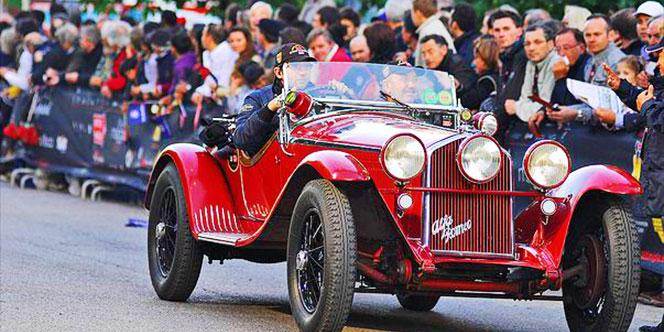As some of the world’s most beautiful vintage cars participate in the Mille Miglia, Carol King visits the museum dedicated to the race – and much more. The Mille Miglia Museum in northern Italy is one of the most interesting I have ever visited – and I am not a fan of old cars. Italy’s Mille Miglia vintage-car race is one of the most spectacular in the world, known for its style. The museum dedicated to the race is equally stylish, packed with all kinds of exhibits that exude a passion not only for Italian cars, but also for the country’s culture and history, from fashion to cinema.

In 2013, the Mille Miglia race is in its 31st edition and some 400 vehicles will participate, travelling from Brescia in Lombardy on a course that takes in Lake Garda, Padua, Ferrara, Rome, Siena, Florence, Modena and Cremona. However, car lovers do not have to wait until the annual race comes round each May. You can see beautiful examples of vintage cars, both ordinary vehicles and racing cars, at any time of the year at the Mille Miglia Museum just outside of Brescia.

Moreover, the museum is not just devoted to cars, there are old motorbikes, signage, petrol pumps and a garage. Yet, what is most interesting about the museum is the fact that the curators have attempted to put the race within a historical, social and political context. Displays written in Italian and English explain the history of Italy since the race began in 1927 until 1957. Packed with photographs, comprehensive information and fascinating detail, any visitor inclined to read them will come away with an insight on Italy that I certainly did not expect to find at a museum devoted to classic cars. Each section of the museum is devoted to a different time period. Computers provide information on the race with imagery of cars and drivers, as well as original film footage of races and even some famous Italian movies.

There are explanations of Italy’s cultural life from literature to cinema, taking in the introduction of one of the country’s most important literary awards, the Bagutta Prize, in 1927, to how the antipathy of Benito Mussolini’s Fascist regime towards jazz meant that the first feature-length talkie, 1927’s ‘The Jazz Singer’, did not make it into Italy at the time. You can learn whom the press gossiped about and the names of some of Italy’s most famous journalists. Then there are the technological and scientific breakthroughs, as the curators explain how the advent of Fascism led to the modernisation of infrastructures, such as the construction of the Naples to Salerno motorway. Politics also makes an appearance with explanations of Italy’s foreign policy and electoral laws. The museum gives context to life in Italy over the years, highlighting events such as the introduction of Mussolini’s dubious demographic policy in 1927, which awarded childbearing “champions”, as well as the decline in agriculture, and the military campaigns in Libya and Ethiopia during the 1930s.
And, in what might be considered a museum that may have a traditional appeal to men, women are not left out. Displays of period costumes show what Italian women have worn since the late 1920s, from trousers to mini skirts.
Nor are women’s achievements forgotten. Literary figures such as Sardinian writer and Nobel Prize winner Grazia Deledda get a mention for creating a new type of female literature that made it on to the international stage. Other figures mentioned include aviation pioneer Carina Massone Negrone, who set a world record in 1935 by flying a Class C Caprioni with a Pegasus engine at a height of 395,11 feet (12,043 m). The structure the museum is housed in is of architectural interest too. The building dates to 1008. Originally, it was a monastery dedicated to Sant’Eufemia della Fonte. Later, the monastery complex was used as a hospital. In 1979, the municipality of Brescia acquired what remained of the complex. In 1997, the city granted the usage rights to the Museo Mille Miglia Association that turned it into the museum, which has been open since 2004. The Mille Miglia Museum is open every day from 10am to 6pm. Tickets cost €7.









